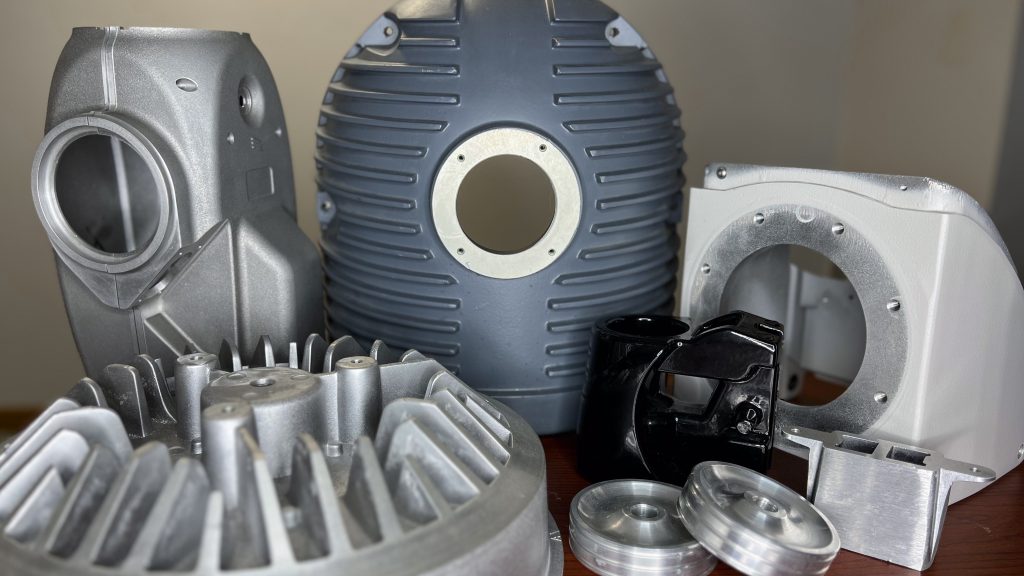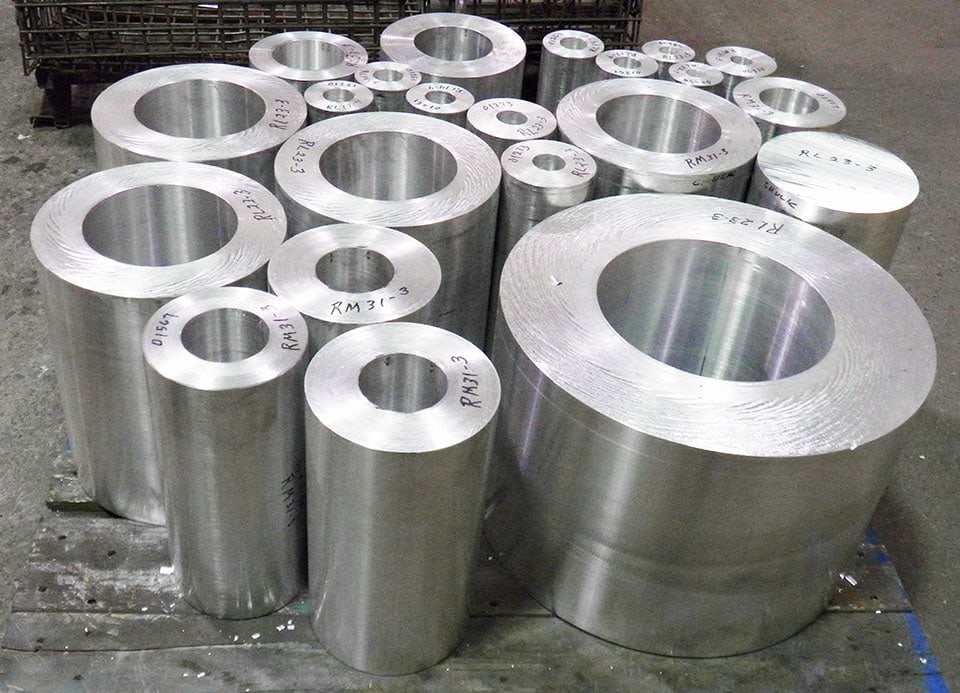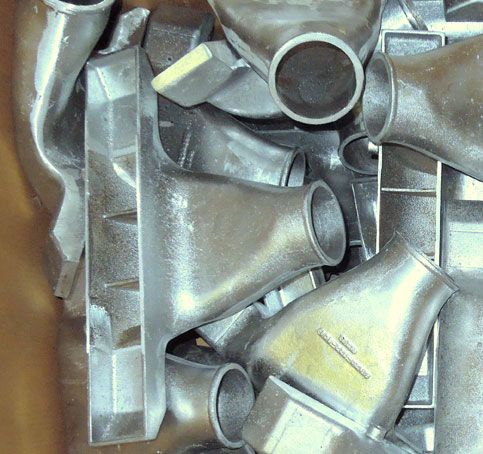Exploring new trends and methods in Metal Castings
Wiki Article
Exploring the Versatile Utilizes and Applications of Aluminum Castings in Modern Industries
Light weight aluminum castings have actually ended up being essential to numerous modern-day industries due to their distinct buildings. They offer significant benefits in weight reduction, thermal conductivity, and deterioration resistance. From automobile innovations to applications in customer goods and construction, their convenience is amazing. Yet, truth level of their impact prolongs past immediate benefits, meaning broader effects for sustainability and effectiveness. What exists in advance for aluminum spreadings in an ever-evolving industrial landscape?Automotive Industry Innovations
The automobile industry has actually progressively welcomed aluminum castings to boost automobile performance and effectiveness. By using aluminum, producers can generate lighter elements, which contribute to enhanced gas economy and lowered exhausts. Trick applications include engine blocks, transmission situations, and structural components, where the material's strength-to-weight proportion delivers resilience without including excess weight.Light weight aluminum castings also offer remarkable thermal conductivity, which aids in better warm dissipation, therefore enhancing engine performance. Moreover, improvements in casting innovations, such as die casting and sand casting, allow the production of complex geometries, enabling innovative styles that enhance area and capability.
The recyclability of light weight aluminum aligns with sustainability objectives in the auto field, advertising eco-friendly practices. As the industry continues to introduce, using aluminum castings is likely to broaden, driving additional developments in lorry style and performance.
Aerospace Applications and Advancements
While the aerospace sector proceeds to focus on weight decrease and fuel performance, aluminum castings have arised as an essential material selection for different applications. Their light-weight nature, combined with high strength-to-weight proportions, enables substantial enhancements in airplane efficiency and effectiveness. Aluminum spreadings are generally made use of in structural parts, such as body frames and wing components, where minimizing weight is necessary.Current advancements in light weight aluminum casting innovations, consisting of improved alloy formulas and precision spreading strategies, have actually even more enhanced the material's efficiency abilities. These advancements allow the production of intricate geometries and elaborate designs while preserving architectural stability. In addition, aluminum's exceptional rust resistance warranties longevity and dependability in rough aerospace environments.
As the aerospace market progressively welcomes sustainability, light weight aluminum spreadings provide a recyclable remedy that straightens with eco-friendly methods, making them a pivotal element in the growth of next-generation aircraft.
Customer Product and Everyday Products
As consumers increasingly look for lightweight yet sturdy materials for day-to-day items, light weight aluminum spreadings have actually acquired popularity in different customer items. The distinct homes of aluminum, including its resistance to corrosion and outstanding thermal conductivity, make it an ideal option for things like cooking equipment, home appliances, and outdoor gear. For example, light weight aluminum cast frying pans and pots offer even warm distribution, boosting cooking performance. Additionally, making use of light weight aluminum in things such as bicycle structures and luggage ensures an equilibrium in between stamina and mobility. Producers appreciate aluminum spreadings for their versatility, as they can be quickly molded right into complicated shapes while maintaining structural honesty. Additionally, the capacity to recycle light weight aluminum without degrading its buildings aligns with expanding consumer choices for lasting products. Overall, aluminum spreadings are essential to the manufacturing of long lasting, practical, and cosmetically pleasing customer goods, satisfying the needs of contemporary way of livings.Building and Architectural Utilizes
Light weight aluminum spreadings have come to be a necessary component in building and architectural style, especially due to their stamina and lightweight nature. These residential or commercial properties make light weight aluminum an excellent option for different applications, including structural components, facades, and ornamental features - Aluminum Foundry. Building contractors and architects progressively use light weight aluminum castings for window frameworks, doors, and roofing systems, improving both performance and visual appeals. The product's resistance to corrosion additionally expands its life-span, reducing upkeep costs and ensuring sturdiness in diverse ecological conditionsAluminum can be conveniently formed into detailed styles, allowing for innovative architectural expressions. Its flexibility facilitates the creation of custom items that meet particular layout needs, from luxuriant railings to intricate supports. As sustainability comes to be a priority, aluminum's recyclability includes to its charm in environmentally friendly building and construction techniques. On the whole, aluminum castings are changing the construction industry by providing lightweight, resilient, and aesthetically enticing remedies.
Digital and electrical Elements
Light weight aluminum spreadings play a necessary duty in the manufacturing of lightweight electric enclosures, which improve mobility and performance in numerous applications. Additionally, their outstanding thermal conductivity makes them ideal for heat sinks, ensuring peak efficiency and longevity of electronic elements. Aluminum's conductive buildings add to its use in numerous electrical conductors, highlighting its relevance in contemporary technology.Light-weight Electrical Rooms
Lightweight electric enclosures play an important role in shielding sensitive electronic components from environmental factors and physical damages. Created from light weight aluminum castings, these units are valued for their strength-to-weight proportion, making them excellent for numerous applications throughout industries. Their light-weight nature aids in decreasing overall system weight, which is vital in mobile and mobile electronic devices. Aluminum's corrosion resistance enhances durability, extending the life expectancy of the encased parts. The capability to mold light weight aluminum right into complex forms permits tailored layouts, providing to particular demands while guaranteeing efficient warm dissipation. In addition, these rooms can be easily integrated right into existing systems, giving flexibility and adaptability in modern technical environments. Overall, light-weight aluminum rooms substantially add to the performance of digital gadgets.Warmth Sinks and Conductors
While lots of materials are used in digital elements, light weight aluminum castings attract attention for their effectiveness in heat management as warm sinks and conductors. Their superb thermal conductivity enables effective warm dissipation, which is vital in stopping the getting too hot of digital tools. Light weight aluminum's lightweight nature additionally improves its viability for applications where weight is a significant variable, such as in aerospace and automotive sectors. Furthermore, light weight aluminum castings can be easily formed into intricate shapes, offering layout versatility for enhancing thermal efficiency. The deterioration resistance of light weight aluminum likewise adds to the long life and integrity of these components in various settings. As modern technology developments and gadgets become a lot more portable, the need for effective warm administration remedies, like light weight aluminum castings, continues to grow.Marine Sector Use
The aquatic sector increasingly relies upon light weight aluminum castings for their phenomenal durability and corrosion resistance. These residential properties make aluminum an ideal choice for numerous applications, consisting of boat hulls, engine elements, and aquatic equipment. The lightweight nature of light weight aluminum castings enables improved gas performance and easier ability to move in watercraft, which is essential for both entertainment and industrial vessels.
Light weight aluminum castings also provide considerable price advantages because of their long lifespan and reduced maintenance demands, minimizing the total functional expenditures for aquatic operators. Furthermore, the versatility of aluminum enables for elaborate layouts that can meet details efficiency requirements.
Makers in the marine field use advanced spreading techniques to produce complex shapes, guaranteeing that components fulfill rigorous safety and security and efficiency standards. As the demand for high-performance aquatic vessels expands, light weight aluminum castings are placed as an essential product in boosting the capability and long life of marine equipment.
Sustainability and Recycling in Light Weight Aluminum Spreading

Aluminum Recycling Refine
Reusing light weight aluminum plays a crucial function in decreasing environmental impact and saving resources within the spreading industry. The aluminum reusing process starts with the collection of scrap aluminum, which can include old components, producing waste, and post-consumer products. This scrap is after that arranged, cleaned up, and shredded into little pieces to promote melting.As soon as prepared, the light weight aluminum scrap is thawed in a heater at lower temperature levels than main aluminum production, substantially decreasing power intake. The molten light weight aluminum is then cast into ingots or other forms for reuse in various applications - Metal Castings. This closed-loop system enables the efficient healing of aluminum, protecting its buildings while decreasing the need for virgin materials. Consequently, the recycling procedure is an important component of lasting techniques in light weight aluminum casting
Environmental Advantages
While light weight aluminum casting plays a critical duty in various markets, its environmental benefits are particularly remarkable regarding sustainability and resource conservation. The light-weight nature of aluminum adds to power effectiveness in transportation, decreasing fuel intake and emissions. In addition, aluminum spreading assists in using recycled materials, significantly reducing the energy needed for manufacturing compared to key aluminum. This reusing process lessens waste and lessens the ecological influence connected with mining and refining basic materials. Light weight aluminum is 100% recyclable without destruction of its homes, promoting a sustainable lifecycle. By picking aluminum spreading, markets can significantly decrease their carbon footprint while promoting source performance, making it a necessary choice in the search of ecologically friendly manufacturing techniques.Closed-Loop Solutions

Frequently Asked Inquiries
What Are the Secret Benefits of Aluminum Castings Over Various Other Products?
Aluminum spreadings use lightweight residential or commercial properties, outstanding deterioration resistance, and high strength-to-weight ratios. They can be easily formed right into complicated shapes, provide good thermal and electrical conductivity, and are economical, making them better over several alternative products.Just how Is the Aluminum Casting Refine Eco-friendly?
The light weight aluminum casting process is eco-friendly because of its recyclability, reduced power consumption, and reduced waste manufacturing. Its capability to utilize recycled products minimizes the carbon footprint, promoting sustainability within manufacturing techniques.What Are Common Difficulties in Aluminum Spreading Production?
Typical obstacles in aluminum spreading manufacturing include preserving dimensional precision, managing thermal contraction, preventing problems like porosity and incorporations, making certain correct mold style, and maximizing production efficiency while decreasing product waste and ecological effect.How Do Light Weight Aluminum Castings Contrast in Price With Other Production Techniques?
Aluminum castings typically use competitive expenses contrasted to other manufacturing methods, particularly for tool to high-volume production. Their lower first tooling costs and effective product usage can lead Wisconsin Aluminum Foundry to positive economics over time.What Future Patterns Are Expected in Aluminum Casting Innovation?
Future patterns in aluminum casting technology are anticipated to consist of advancements in automation, enhanced alloy structures, enhanced reusing approaches, and the assimilation of 3D printing, all focused on boosting efficiency, decreasing costs, and reducing environmental influence.Recent developments in light weight aluminum casting innovations, including boosted alloy formulas and accuracy spreading techniques, have additionally improved the product's performance capabilities. Light weight aluminum spreadings have come to be an important part in construction and architectural style, especially due to their toughness and light-weight nature. The light weight aluminum reusing procedure starts with the collection of scrap aluminum, which can include old components, making waste, and post-consumer items. Once prepared, the light weight aluminum scrap is melted in a heating system at reduced temperatures than main light weight aluminum manufacturing, considerably minimizing energy intake. Additionally, aluminum casting helps with the usage of recycled products, substantially lowering the power needed for production contrasted to key light weight aluminum.
Report this wiki page